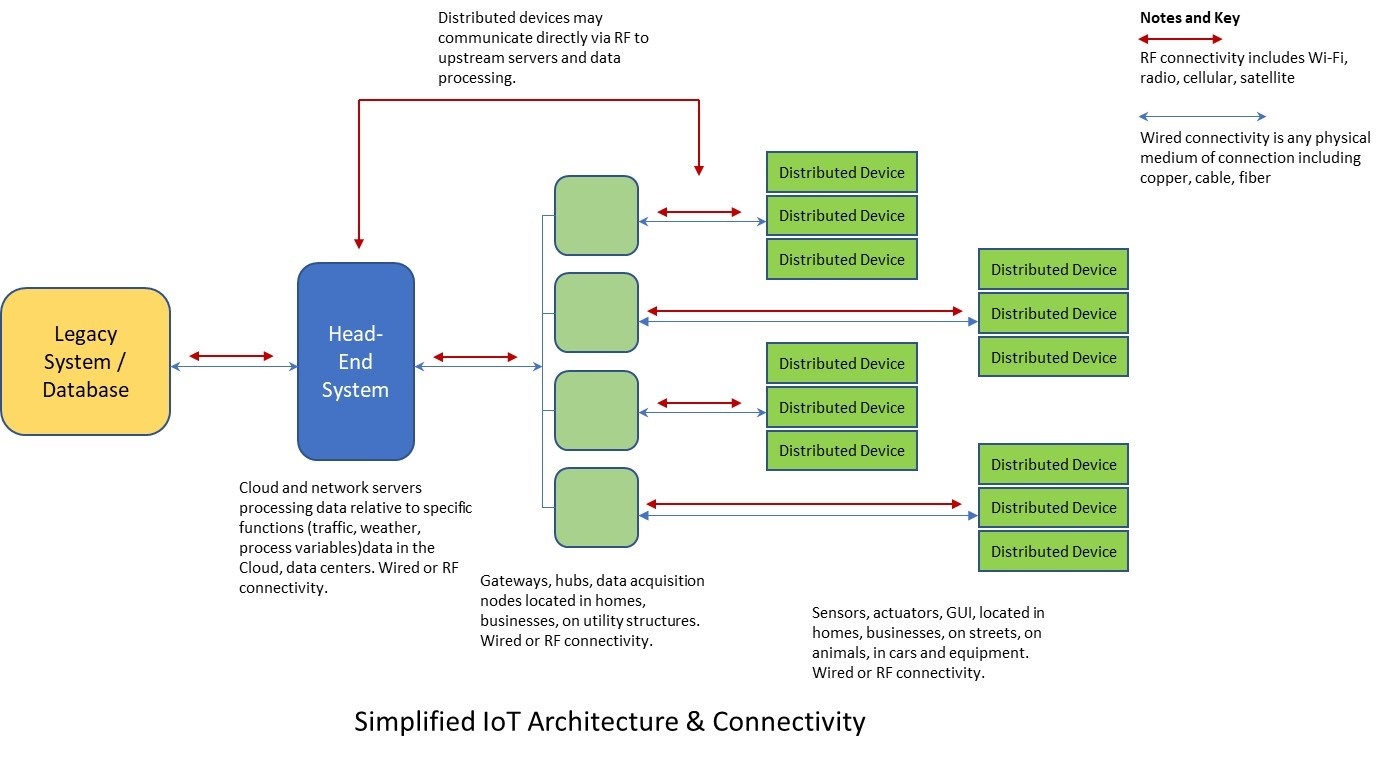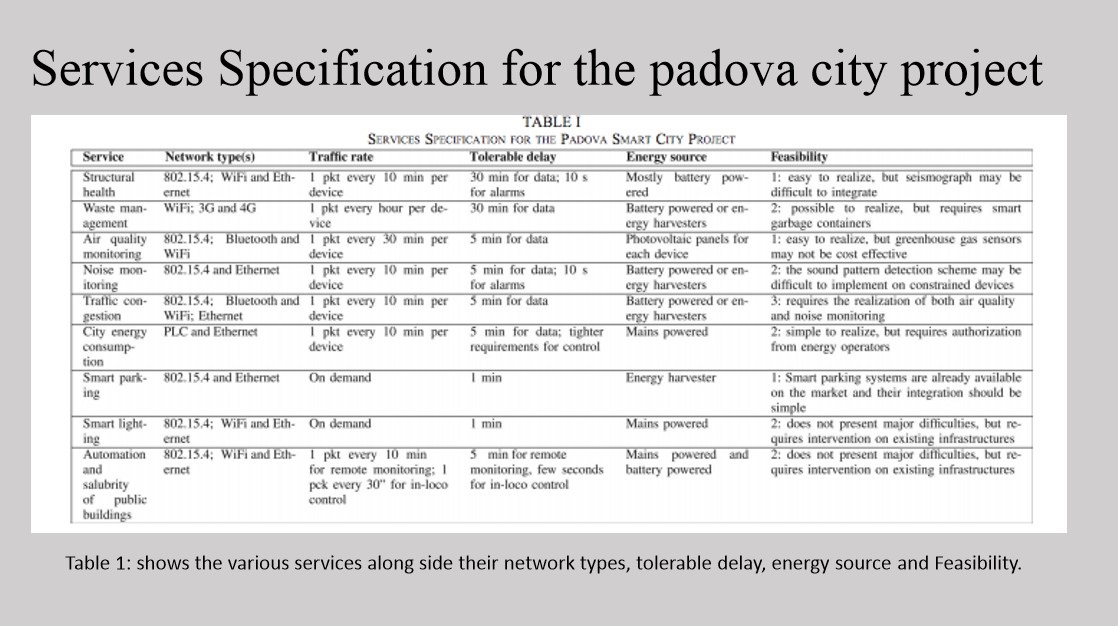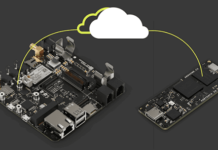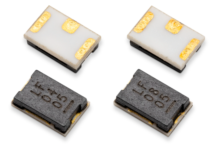
The Internet of Things (IoT) is delivering the promises of greater efficiency, improved production, enhanced and new services, and deeper levels of control and data acquisition for city planners, city managers, agriculture, manufacturing, and individuals.
The widespread availability of wireless, radio frequency (RF) based connectivity is fueling the growth and success of IoT solutions. Because IoT solutions typically rely on resources distributed over wide geographical areas for system operation, an RF-based infrastructure is ideal.
IoT solutions are being designed to deliver:
- Optimized use of existing infrastructure (managing traffic flow via coordinated signaling networks and connected vehicles) Energy management
- Efficient use of natural resources (subsurface moisture sensors controlling rates of irrigation with weather data integration)
- Decentralized access to legacy databases to facilitate self-service by stakeholders in various instances such as license renewal, and registration Street light management and maintenance
- Integration of AI for semi-autonomous operation of manufacturing, agricultural, and urban processes
- Acquisition of larger volumes of more detailed data to support continual process optimization.
An IoT solution architecture includes both software and hardware components. For the purposes of this paper, hardware will be the focus. Widely distributed hardware resources are used to provide the localized control, communication, and data acquisition capabilities required for effective operation. These resources can include:
- Existing Wi-Fi networks
- Smart or internet capable devices such as thermostats, traffic sensors, environmental monitors Hubs collecting input from several wireless and wired devices
- Additional devices required to manage the efficient flow of communications and commands including internet and other network servers
What challenges are IoT solution implementers facing?
Smart City IoT solutions are designed to improve utilization of capital investments including optimization of traffic flows on highways, light rail and public transportation management, provision of online services from existing systems, and so forth. Impediments to deploying Smart City IoT solutions can include:
- Establishing locations for the distributed devices
- Gathering the necessary permits required for co-location on or in existing utility infrastructure,
- Implementing the solution quickly and cost effectively
- Operating and maintaining the deployed solution
Smart Agriculture IoT solutions address water management, monitoring environmental variables relating to soil, plant health, water and heat stress of animals, monitoring animal health, managing livestock feeding on a per animal basis through RF tags, integration of weather data for crop management, links to commodity markets, and use of distributed or mobile devices. Smart Agriculture impediments can include:
- Distances between IoT hardware components
- Lack of existing utility infrastructure (poles, cell service, etc.)
- Harsh operating environments
Industry 4.0 might be considered more akin to Smart Ag than Smart Cities because of the harsh environments encountered in many situations and the potential for significant distances between hardware components. Consider, for example, mining, refining, and chemical production operations. These situations typically occupy sizeable areas and many of the process components are located outside. Structures for attaching wires may be widely separated or be unsuitable for direct attachment. IoT components can be exposed to the weather as well as dusty, caustic, or corrosive environments that can impact hardware life and functionality.
Regardless of the IoT application, RF provides an optimal solution in many, if not the majority of, cases. Wired solutions bring the following issues:
- Running additional wire (copper, fiber, or coax), on poles requires permits and permission from the host utility.
- Adding wires may necessitate a loading study to confirm the ability of the poles to handle the extra wire’s weight, weight from icing on the new wire, and wind loading.
- Co-location on utility poles and other facilities typically incurs an ongoing, periodic fee. Underground wiring involves expensive excavation and repair of disrupted surfaces.
- When wiring breaks, it must be repaired by qualified crews. If it is underground, the cost and delay is significant.
- There may not be poles in Smart Ag solutions and underground is rarely practical.
- With Industry 4.0, space may not be available or readily accessible for installing or attaching wiring.
RF centered solutions are ideal for the following reasons:
- Fewer co-location requirements
- Easier to maintain – a failed unit can often be put back into service with a board replacement
- Provides architectural design flexibility – supports 100% wireless or hybrid approaches
- Creates the infrastructure for connecting mobile distributed devices carried on vehicles and farm equipment
Specify the perfect connector for optimal RF performance with Amphenol RF
More devices than ever before are being sold with a wireless connectivity capability. This additional capability is an acknowledgement of the flexibility RF provides and is a response to widespread availability of RF systems that provide access to the internet for cloud-based control and data analysis. This rapid growth can put engineers at a disadvantage if they do not have RF experience or have not had experience integrating RF capable components in their designs.
Amphenol RF engineers are a tremendous resource to engineers facing either of these situations. As the largest RF connector provider globally, Amphenol RF engineers can apply their unparalleled knowledge of connector optimization to your specific situation. This resource can guide engineers and specifiers in areas such as:
- Does the RF device’s PCBA use through board or surface mount components? Which connector is best suited for the situation?
- Are the PCBA launch geometries (antipads, trace widths, and gaps) optimized to handle the
project frequency? - What type of antenna connection is preferred to meet initial cost requirements and ease of future maintenance?
- What type of data and command communication is required in terms of quality, packet size, and speed?
- Where will the RF device be mounted? In an enclosure? In a corrosive environment? In harsh weather environments?
- What are the RF frequency and quality requirements? Where are antennas mounted? Internally? Externally?
- What type and form factor of antenna is being used? How far is it from the RF Hardware?
- How many distributed devices will be connected to a single antenna? Is a multi-port connector or single connector more applicable?
- Can the design utilize pre-configured, off-the-shell assemblies or is a custom connector more beneficial?
Table 1 is taken from an article review written by Judith Sobotie regarding the Padova, ITALY Smart City project. The table illustrates the complexity of a Smart City technical architecture in terms of integrating the various components into a properly functioning IoT solution. It lists communication options, data timing, packet sizes, and more. Amphenol RF engineers can aid in selecting the right connector for each layer in the solution.
Amphenol RF offers an extensive array of technical product and product application data in addition to its engineering capabilities. One example is the availability of ANSYS HFSS 3D component models (see Figure 1) for many Amphenol RF connectors. These free downloadable files allow engineers to test a PCB connector’s performance in their PCBA design with an extremely high degree of accuracy. These files eliminate the need for building prototypes to determine performance, reducing both development costs and time.
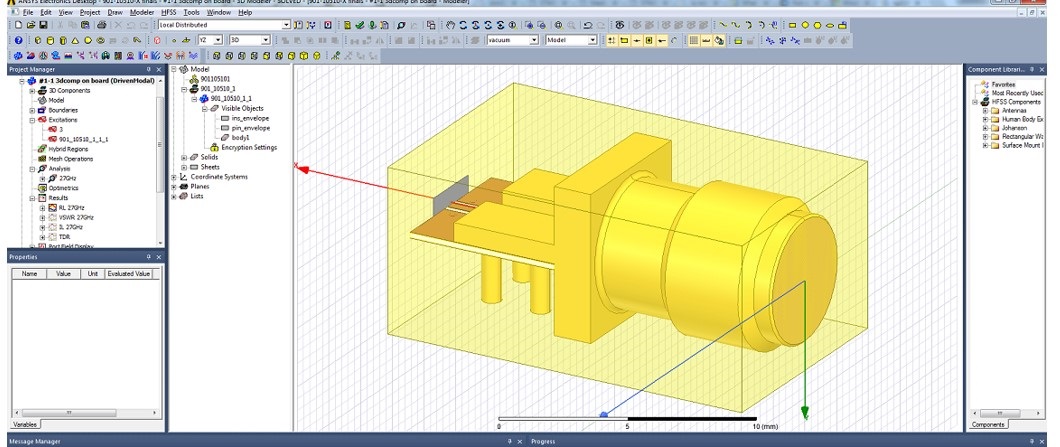
When it comes to implementing a RF-based solution, the quality of the connectors used will go a long way to determining how well the solution will perform. Regardless of the type required, a reliable, durable, high performance connector is a necessity for optimization of RF signal transmission. Proper connector specification and procurement is critical.
Examples of end use applications
Commercially available prefabricated wireless modules incorporating Amphenol RF connectors. These prefabricated modules are designed to provide engineers with compact, functional sources of wireless and RF connectivity including Wi-Fi, ZigBee, and Bluetooth. These modules are frequently part of reference designs engineers utilize to speed development of their own products. Engineers working tasked with building a wireless capable device may be unfamiliar with RF and wireless technology and optimizing its integration into their product. Amphenol RF engineers are an excellent resource to assist with the integration.
RF connectors are designed into a PCBA assembly to facilitate connection of antennas, support the frequency and impedance of the solution, and protect against environmental conditions (IP67 or IP68 spec connectors).
Possible use cases
- FAKRA for vehicle connectivity in Smart City solutions.
- MCX for quick antenna connection and disconnection in Industry 4.0 point of use control and data acquisition devices.
- SMA for base station connectivity in Smart Agriculture
Pre-configured cable assemblies are designed to provide affordable, proven antenna connectivity to antennas located outside the electronics case or inside larger hardware cabinets. They are also ideal for prototyping hardware designs.
Possible use cases
- SMA to MAC for traffic signal control connectivity in Smart City solutions.
- IP67 TNC to AMC for robust antenna connection in Industry 4.0 point of use control and data acquisition devices.
- IP67 SMA to AMC equipment connectivity in Smart Agriculture.
Custom cable assemblies can be engineered and manufactured to solution specific requirements that existing, off-the-shelf alternatives cannot satisfy. Amphenol RF can manufacture cable assemblies that:
- Incorporate any connector configuration
- Use any cable type including ruggedized and armored Support hybrid RF/digital solutions
- Support ganged connectivity
- Comply with IP67 and IP68 protection



